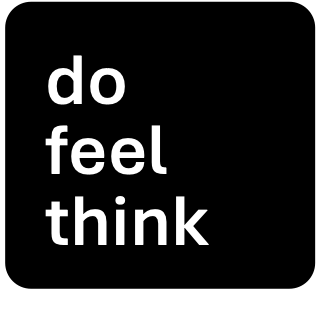End Chauvinism in the Workplace
This year, International Women’s Day was Tuesday, March 8th. Progress towards gender parity has slowed in many places around the world, and IWD’s goal is for everyone - men and women - to pledge to take a concrete step to help achieve gender parity more quickly.
Action begets action. As an individual or an organization, what can you do to help?
In addition to a wider effort to increase women’s leadership roles by 20 percent by 2020, disruptive agency TBWA conducted a global survey of women’s experiences in their advertising careers and paired quotes from that survey with men in the industry reading them on-camera, including celebrated agency execs like Lee Clow and Jean-Marie Dru.
TBWA/Media Arts Lab president Erica Hoholick explains: “This campaign was showing the organization and the industry that the most senior male leadership of TBWA is just as invested in change as the women are.” The agency says its campaign “aims to emphasize both the irony of these sentiments coming from the mouths of men, and more importantly, to underscore the fact that the issues faced by women cannot and should not be challenged or changed by women alone.”
According to International Women’s Day, workers in eight countries value competitive pay and benefits most in a potential job, followed by working flexibly and still being on track for promotion. Encouraged by Founder & CEO Ian Schafer, digitally led creative agency Deep Focus analyzed employee salaries in 2015 to identify and correct any salary disparity by gender. The results were shared across the agency, no significant disparity was found, and the organization is devoted to maintaining this equality.
Commitment of leaders like those at TBWA and Deep Focus are a powerful first step, but they can’t do it alone and there is much more to be done. Do Feel Think analyzed the small sample of quotes captured in the #takethelead2020 campaign and identified five key areas of gender disparity and discrimination:
Exclusion of women in the form of the boys club, discouragement to participate in certain industries such as sports, and the very real glass ceiling associated with leadership roles
“My boss said I didn’t look the part of a leader.”
Objectification, commenting on the attractiveness of female colleagues or attributing success to good looks
“I was told to come to a meeting just to look pretty.”
Criticism of behaviors by women, such as crying, disagreeing or expressing opinions
“Every time I disagreed with my old boss he called me emotional.”
Fostering doubt in ability with a lack of female role models in leadership positions and reinforcing that women have less power, less worth, and a need to prove themselves
“I’m just not as powerful.”
Having a child conveying that a woman has less commitment to the team and her career has lower priority
“I live in constant guilt that I’m failing work and my kids.”
Let’s go back to first principles. What is the problem we face, and why does it exist?
Several quotes collected from women in advertising mention crying in the workplace. Let us posit that crying and yelling are two sides of the same coin, both the outcome of frustration and fear. Even if not welcome, yelling is perceived as a show of strength in the workplace, whereas crying indicates weakness.
A hypothesized first principle: Workplace norms evolved in a time when women were far less present in the corporate environment, and so current norms are framed by the male perspective. Behaviors commonly described as masculine, such as aggression and authoritativeness, are rewarded. Behaviors commonly described as feminine – generosity, collaboration, empathy – are devalued. This is not the way of the future, and it is not the way of successful companies in the years to come.
A leading ongoing study of Millennials and Gen Z, the Cassandra Report has identified significant cultural shifts in both gender norms and accepted workplace demands. Gender is becoming more fluid, gender equality is expected, boys and men are proudly labeled Feminist. Maternity and paternity policies are improving, work-life balance gains new meaning in work-life blending, and employee wellness has become a priority. The workplace of the future will be shaped by virtues both masculine and feminine.
Motivated individuals and successful companies of the future will not sit idle; they will take action. As TBWA highlights, “Women’s issues are everyone’s issues.” Together we will create workplace that benefits and rewards everyone, regardless of gender.
So what can you do to end chauvinism in the workplace?
Organizations and business leaders:
Illuminate the path to leadership by making career opportunities more accessible to women
Speed up cultural change with progressive corporate policy, such as paternity leave and flexible work arrangements
Build supportive environments and work to eliminate conscious and unconscious bias
Men, women, everyone:
Take the International Women’s Day Pledge.
help women and girls achieve their ambitions
challenge conscious and unconscious bias
call for gender-balanced leadership
value women and men's contributions equally
create inclusive, flexible cultures
You: Don’t be a bystander to gender disparity or gender discrimination; action begets action. Honor your pledge. Support your colleagues. Encourage positive behavior. See something, say something, do something.

